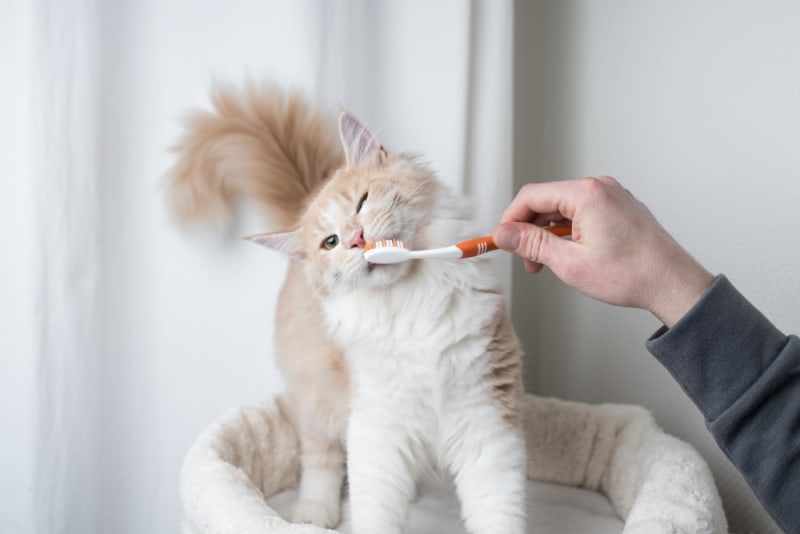Written by Rene Knapp, long time TICA member and dedicated cat lover.
This guide covers how to brush a cat’s teeth, signs of dental disease, safe dental products, and when to schedule
a professional cleaning so your feline’s smile stays bright.
Why Cat Dental Care Matters
Plaque forms within hours after eating and can mineralize into tartar, irritating the gums and setting the stage for
gingivitis and periodontitis. Proactive feline oral health care reduces discomfort and helps protect
overall wellbeing.
Common Signs of Dental Problems
- Bad breath, drooling, pawing at the mouth
- Red, swollen, or bleeding gums
- Preference for soft food, chewing on one side, or dropping kibble
- Behavior changes: hiding, irritability, reduced grooming
How to Brush a Cat’s Teeth (Step-by-Step)
1) Gather Cat-Safe Supplies
- Pet toothbrush or finger brush
- Enzymatic cat toothpaste (never human toothpaste)
- Treats to reward calm behavior
2) Build Positive Associations
Start by letting your cat lick a dab of toothpaste from your finger for a few days. Touch the lips and lift them gently.
Keep sessions short and upbeat.
3) Brush Gently
Angle bristles toward the gumline and use small circular motions, focusing on the outer surfaces of the back teeth
where plaque accumulates most. Aim for daily brushing; if not possible, several times weekly still helps.
Helpful Dental Products (Vet-Recommended Categories)
Dental Diets & Treats
Look for products evaluated by veterinary dental bodies or your veterinarian. These can complement brushing,
but they don’t replace it.
Water Additives & Gels
Use only cat-specific formulas as directed. Avoid products containing xylitol or essential oils not labeled safe for cats.
Veterinary Dental Care: Exams, X-rays, and Cleanings
Even with excellent home care, many cats benefit from periodic professional cleanings under anesthesia.
Your veterinarian will tailor the schedule to your cat’s age, exam findings, and dental X-rays.
Before & After the Procedure
- Discuss bloodwork, anesthesia protocols, pain control, and dental radiographs.
- Follow home-care instructions to maintain results and slow plaque buildup.
Cat Dental Care FAQs
How often should I brush?
Daily is best; several times per week still provides meaningful benefits.
What if my cat won’t tolerate brushing?
Use gradual training, try a finger brush, and ask your vet about adjunct products. Don’t force; build up slowly.
Is bad breath normal in cats?
Persistent halitosis is often a sign of dental disease. Schedule an exam to rule out oral or systemic causes.






















































































